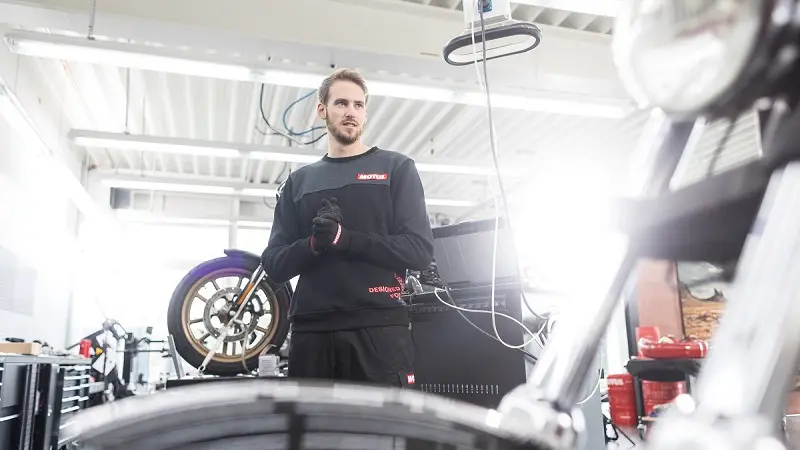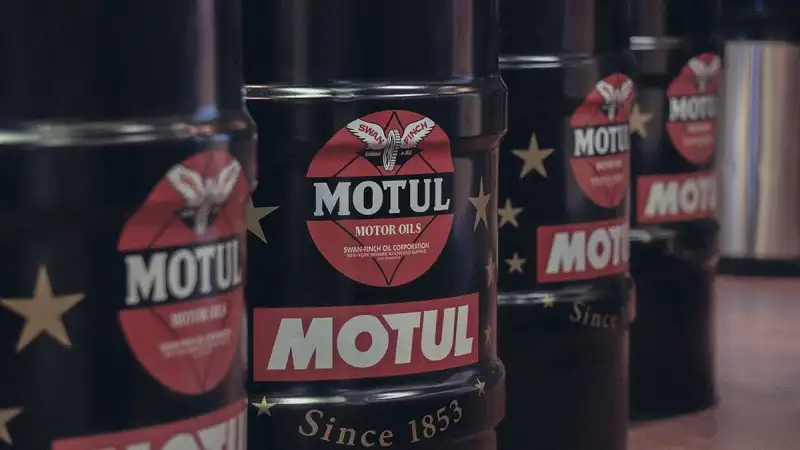When you live in a region with cold winters, the morning routine often involves a momentary shiver as you step outside to start your car. As the engine roars to life, you might not think much about the impact of that abrupt awakening on your vehicle. However, the phenomenon known as a “cold start” can significantly affect your engine’s health and longevity. In this blog post, we will explore how this seemingly routine occurrence can increase engine wear.
To comprehend the full scope of this issue, we’ll start by defining what exactly a cold start is and why it matters. Engine wear is a concern for every vehicle owner, as it can lead to costly repairs and reduce the lifespan of your engine. By the end of this post, you’ll not only understand the mechanics behind cold starts but also discover practical steps to mitigate their impact on your vehicle.

Understanding Cold Start
A cold start is a term used to describe the process of starting a vehicle’s engine when it’s cold, typically after it has been sitting idle for several hours or overnight. During this time, the engine cools down to the ambient temperature, which can be significantly lower in colder climates. When you turn the key (or push the start button) in these conditions, several crucial changes occur:
- Lubrication Challenges — One of the immediate challenges during a cold start is that the engine’s oil has thickened due to low temperatures. Thick oil doesn’t flow as easily, making it harder for the engine’s moving parts to receive proper lubrication. This can lead to increased friction and wear.
- Temperature Variations — The sudden ignition of a cold engine introduces rapid temperature changes. Different engine components, such as the cylinder walls, pistons, and valves, expand at different rates, which can result in uneven stress and potential damage.
- Fuel Combustion Differences — Cold air is denser than warm air, which affects the air-fuel mixture in the engine. This can impact combustion efficiency and potentially lead to incomplete combustion, contributing to increased engine wear.
Effects of Cold Start on Engine Components
Cold starts affect various engine components differently. Here’s a closer look at some of the primary effects:
- Lubrication — As mentioned earlier, thickened oil during a cold start can hinder proper lubrication, leading to increased friction and wear on critical engine parts, including bearings, camshafts, and piston rings.
- Corrosion — When a cold engine starts, it often takes some time to reach its optimal operating temperature. During this period, moisture can accumulate inside the engine due to condensation. This moisture can lead to corrosion of internal components, especially if the vehicle isn’t driven long enough to fully evaporate it.
- Heat Stress — The rapid temperature changes that occur during a cold start can stress engine materials. Components expanding at different rates can lead to micro-cracks and wear over time.
Understanding these effects of cold starts on your engine is the first step toward addressing the issue of increased engine wear.
Engine Wear Factors
Now that we’ve grasped the mechanics of a cold start and its immediate effects on your engine, it’s essential to delve deeper into the factors that contribute to engine wear, particularly in the context of cold starts.
Friction and Wear
Engine oil plays a crucial role in reducing friction and wear by providing lubrication between moving parts. However, at low temperatures, oil viscosity increases, making it thicker and less effective in lubricating the engine components. This viscosity challenge intensifies during cold starts, potentially causing excessive wear on critical parts.
When your engine is cold, internal components are less pliable, and friction between them is higher. This elevated friction results in accelerated wear on components such as the cylinder walls, piston rings, and bearings.
Corrosion
During cold starts, as the engine warms up, moisture can accumulate inside the engine due to condensation. This moisture is problematic because it can lead to corrosion of metal components, including engine cylinders, valves, and exhaust systems.
Cold starts can exacerbate the oxidation of engine oil, causing it to break down more rapidly. This breakdown can result in sludge and deposits forming in critical areas, further increasing wear and reducing engine efficiency.
Heat Stress
The temperature differentials experienced during a cold start, when the engine transitions from cold to operating temperature, can create stress within the engine. These stressors can lead to micro-cracks in components, reducing their durability and contributing to long-term wear.
Understanding these engine wear factors is crucial for vehicle owners looking to protect their engines from premature wear and damage caused by cold starts.
The Role of Oil
Engine oil is the lifeblood of your vehicle’s engine, and its quality and properties play a pivotal role in mitigating the adverse effects of cold starts and reducing engine wear. Let’s delve into the importance of engine oil and how it can be optimized for cold start conditions.
Importance of Engine Oil
Engine oil serves multiple critical functions in your vehicle:
- Lubrication — Its primary role is to lubricate moving engine components, reducing friction and minimizing wear. Proper lubrication is especially vital during cold starts when components are less pliable and more susceptible to damage.
- Cooling — Engine oil also helps dissipate heat generated by the engine, preventing overheating and maintaining optimal operating temperatures.
- Cleaning — It carries away contaminants and deposits, preventing them from accumulating on engine parts and causing wear.
Cold-Start-Specific Oil Properties
Choosing the right engine oil for cold starts can make a significant difference in preserving your engine. Cold-weather engine oils, often labeled with a lower “W” viscosity rating, flow more easily at low temperatures. Here are some cold-start-specific properties to look for:
- Viscosity — Opt for engine oils with a lower viscosity rating, denoted by the “W” in the oil’s classification (e.g., 5W-30 or 0W-20). Lower viscosity oils flow more readily in cold conditions, ensuring that critical engine components receive adequate lubrication during startup.
- Additives — High-quality engine oils contain additives that enhance cold-weather performance. Look for oils with additives that improve cold flow properties, reduce friction, and offer better protection during startup.
- Full Synthetic Oils — Full synthetic oils often provide superior cold-start performance compared to conventional oils. They maintain their fluidity and lubricating properties even in extremely low temperatures.
Oil Additives and Their Functions
Modern engine oils also contain various additives designed to protect your engine under challenging conditions. Some key additives and their functions include:
- Anti-Wear Additives — These additives form a protective layer on engine components, reducing friction and wear during startup and operation.
- Detergents and Dispersants — They help keep the engine clean by preventing the buildup of sludge, deposits, and contaminants.
- Anti-Oxidants — These additives inhibit oil oxidation, maintaining oil stability and prolonging its effectiveness.
By selecting the right engine oil with appropriate viscosity and additives tailored to cold start conditions, you can significantly minimize the wear and tear your engine experiences during those critical initial moments.
How to Minimize Cold Start Engine Wear
Now that we understand the factors contributing to engine wear during cold starts and the role of engine oil, let’s explore practical strategies to minimize these effects and extend the life of your engine.
Using the Right Engine Oil
Refer to your vehicle’s owner’s manual or consult with a mechanic to determine the ideal engine oil viscosity for your specific climate and driving conditions.
If you live in an extremely cold region, investing in a high-quality full synthetic oil designed for cold weather can offer superior protection during cold starts. Our fully-synthetic Motul 8100 oils feature a property that makes them naturally stick to metal surfaces. As a result, even when your engine has been off for multiple hours overnight, there is still a protective film of lubricant covering all the critical engine internals. When you go start the car the next day, that film prevents the usual wear and tear that happens until oil pressure is established.
Aside from using quality synthetic oils, make sure that you change your engine oil at the recommended intervals. Fresh oil performs better and offers improved protection against wear.
Regular Maintenance and Inspection
Adhering to your vehicle’s recommended maintenance schedule, including oil changes, will keep your engine in top condition. Regularly check your engine’s oil level to ensure it remains within the recommended range. Low oil levels can increase wear.
Avoiding Short Trips
Whenever possible, group your errands into a single trip. Cold starts are most detrimental during short trips, as the engine doesn’t have enough time to reach optimal operating temperature. Plan your routes to minimize stop-and-go driving, as continuous idling and frequent starts and stops can contribute to increased wear.
By implementing these strategies, you can significantly reduce the wear and tear your engine experiences during cold starts. Taking proactive steps to protect your engine will not only extend its lifespan but also save you money on potential repairs down the road.
Avoid Cold Start Wear with Motul Fully Synthetic Engine Oils
In this blog post, we’ve explored what happens during cold starts and how they impact engine wear. We’ve learned how the right engine oil, pre-warm-up techniques, regular maintenance can collectively mitigate the effects of cold starts on your vehicle’s engine and the environment.
The only thing left to do is point you to our catalog where you will find a wide range of premium fully-synthetic engine oils that will protect your car and keep your engine lubricated in those moments of low lubrication.






